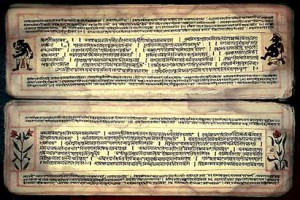The Puranas contain the essence of the Vedas. They were written to impress the teachings of the Vedas onto the masses and to generate devotion to God in them. They have five characteristics: history, cosmology (with symbolical illustrations of philosophical principles), secondary creation, genealogy of kings, and Manvantaras (the period of Manu’s rule consisting of 71 celestial yugas).
 The Puranas were meant, not for the scholars, but for ordinary people who could not understand high philosophy and could not study the Vedas. There is an emphasis on the worship of Brahma (the creator), Vishnu (the preserver), Shiva (the destroyer), Surya (the Sun God), Ganesha (the elephant headed god known to be the remover of obstructions ), and Shakti (the goddess). All the Puranas belong to the class of Suhrit-Sammitas, or the Friendly Treatises, while the Vedas are called Prabhu-Sammitas or Commanding Treatises with great authority.
The Puranas were meant, not for the scholars, but for ordinary people who could not understand high philosophy and could not study the Vedas. There is an emphasis on the worship of Brahma (the creator), Vishnu (the preserver), Shiva (the destroyer), Surya (the Sun God), Ganesha (the elephant headed god known to be the remover of obstructions ), and Shakti (the goddess). All the Puranas belong to the class of Suhrit-Sammitas, or the Friendly Treatises, while the Vedas are called Prabhu-Sammitas or Commanding Treatises with great authority.
There are 18 Puranas : Brahma Purana, Padma Purana, Vishnu Purana, Vayu Purana or Siva Purana, Bhagavata Purana, Narada Purana, Markandeya Purana, Agni Purana, Bhavishya Purana, Brahma Vaivarta Purana, Linga Purana, Varaha Purana, Skanda Purana, Vamana Purana, Kurma Purana, Matsya Purana, Garuda Purana and Brahmanda Purana. Of these, six are Sattvic Puranas glorifying Vishnu; six are Rajasic, glorifying Brahma; six are Tamasic, glorifying Siva. Vyasa, the son of Rishi Parasara, is said to be the author of them all.